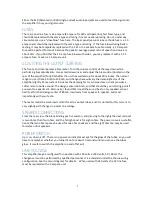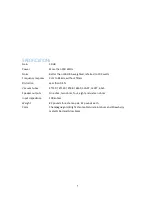
3
COOLING
Convection cooling. Cool air is drawn from under the chassis by the heat from the tubes acting as
an air pump, and exhausting the warm air out the chassis through the top vents. Do not place the
amplifier on a carpet without something hard to sit on like a piece of nice glass cut to the same
size as the unit. This will allow the feet to do their job by keeping the bottom raised, allowing
unimpeded airflow. A glass shop can make such a base plate and in colors if you wish. A nice
translucent brown, burgundy or smoke looks beautiful. It should be at least a quarter of an inch
thick. 12 1/4” X 14 1/2”.
MONITORING
Once the idling current has been set, it will normally not need to be adjusted for several years
unless you want to experiment for different sound. Or if you install different output tubes, or the
amplifier suddenly starts to sound funny. If you hear a POP and see a flash, yet the amp continues
to play, you should first check the current and then the output tube fuse. If the fuses blow, the
output current will drop to zero. If the tube fuse blows, replace it WITHOUT replacing any tubes.
Turn the amp on and monitor the current. If it climbs to within the range you had set, and if the
amp sounds good, all is well.
Often, an output tube has a speck of dust-like impurity, which comes into contact with an internal
element, shorting the element, and is vaporized into gaseous oblivion. The getter, the mirror-like
shiny plating on the inside of the tube does its job, absorbs the vaporized material and the tube is
like new again. All it takes is a new fuse.
If you install a new fuse and it blows again, you will need to determine which tube is the culprit.
Proceed as follows: remove all output tubes and turn the volume control all the way down. Turn
the amp on and leave it on. While monitoring the current, put a pair of tubes into sockets number
five and number six. Allow one minute on the clock for the two tubes to warm up. If the current
comes up to about one third the normal amount, both those tubes are good. Remove those tubes
and install another pair, also in sockets five and six. Continue on until a fuse blows, or the tubes
won't bias up.
Then borrow a known good tube from the other amplifier, and using it as a mate, place it
temporarily in socket number five, use the process of elimination to figure out which of the last
two tubes is bad. At this point, if you get lucky, only one trial will be needed. If you are not lucky,
then it will take two trials. Now you can turn the amp off.
You will be able to install and remove the tubes with your bare fingers if you do it within about a
minute or so of installing each fresh set. That's because it takes substantially longer than a minute
for the tubes to get too hot to hold.






